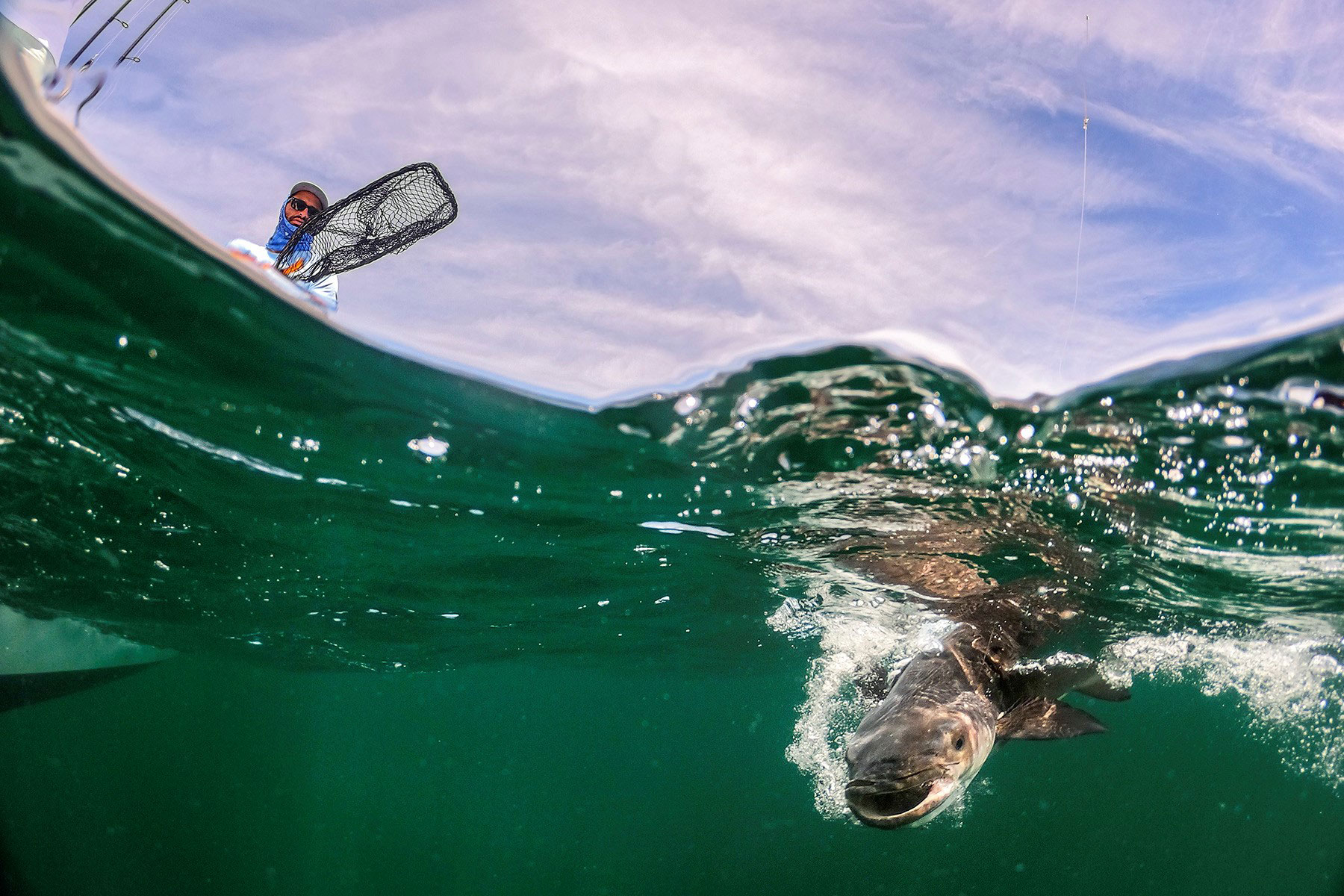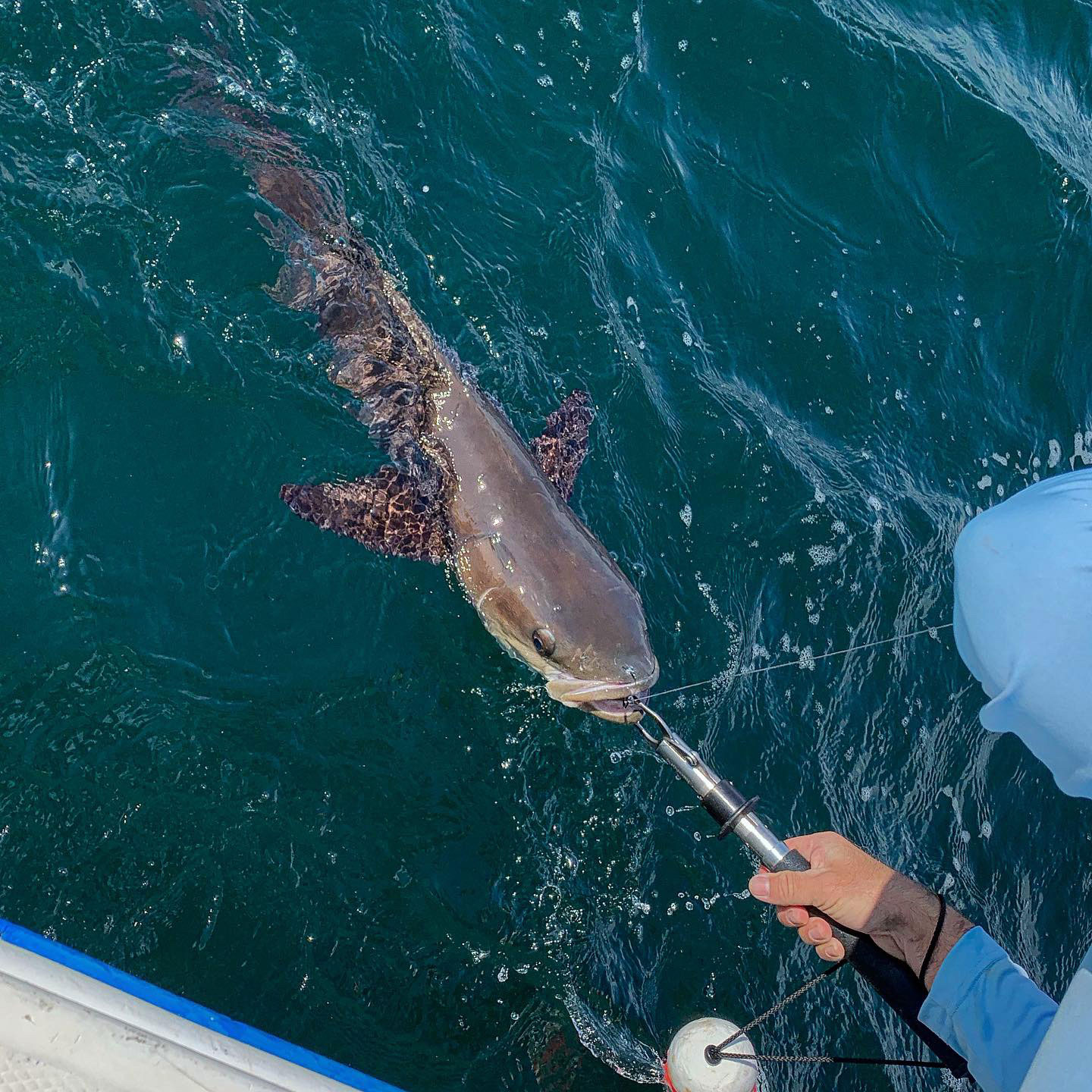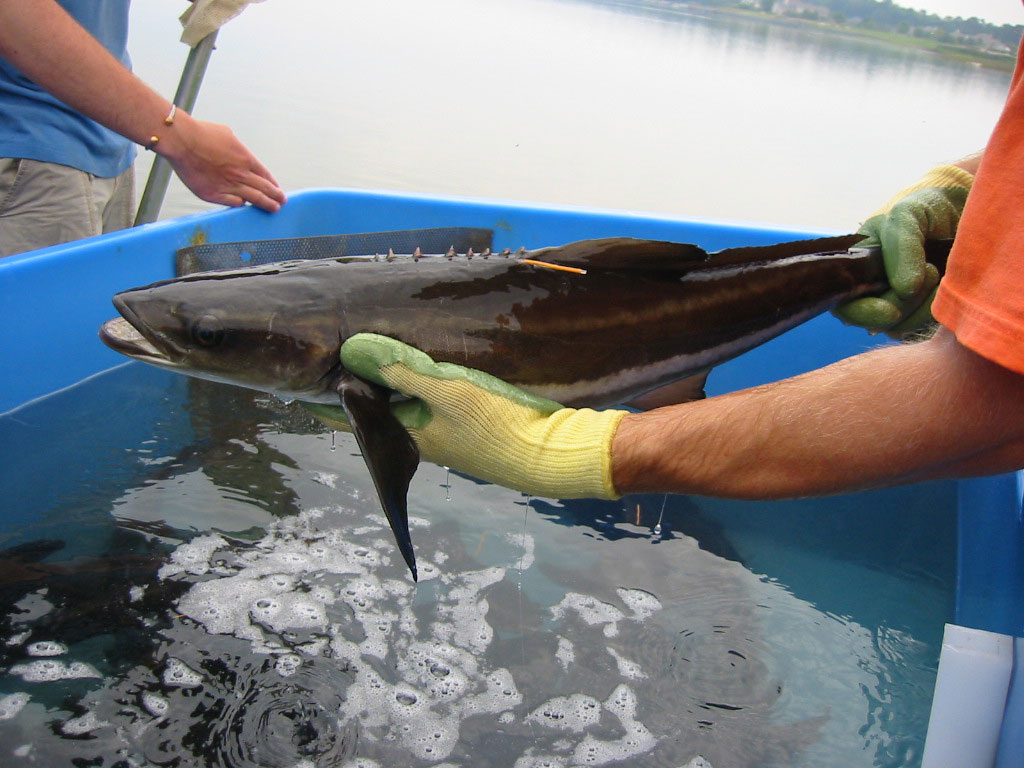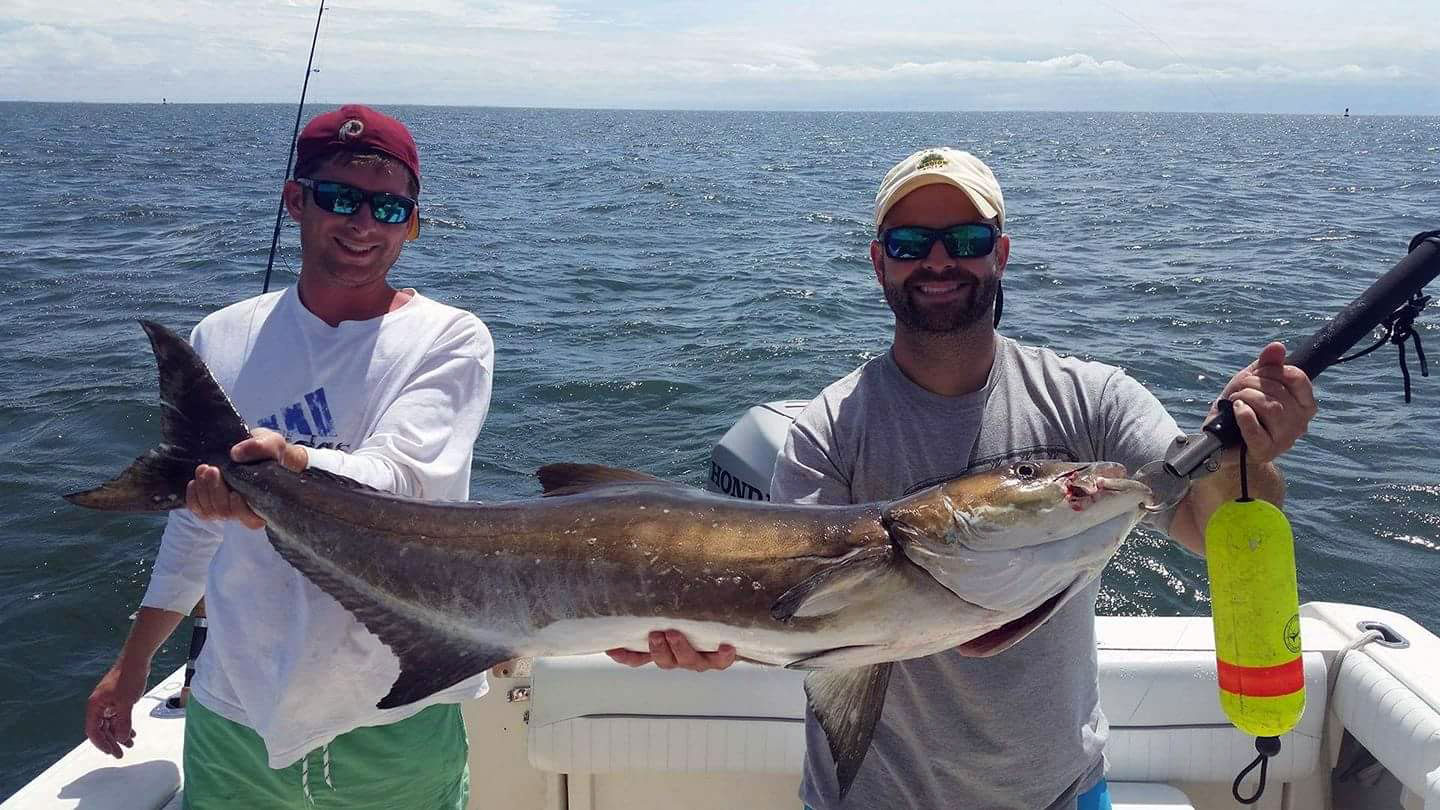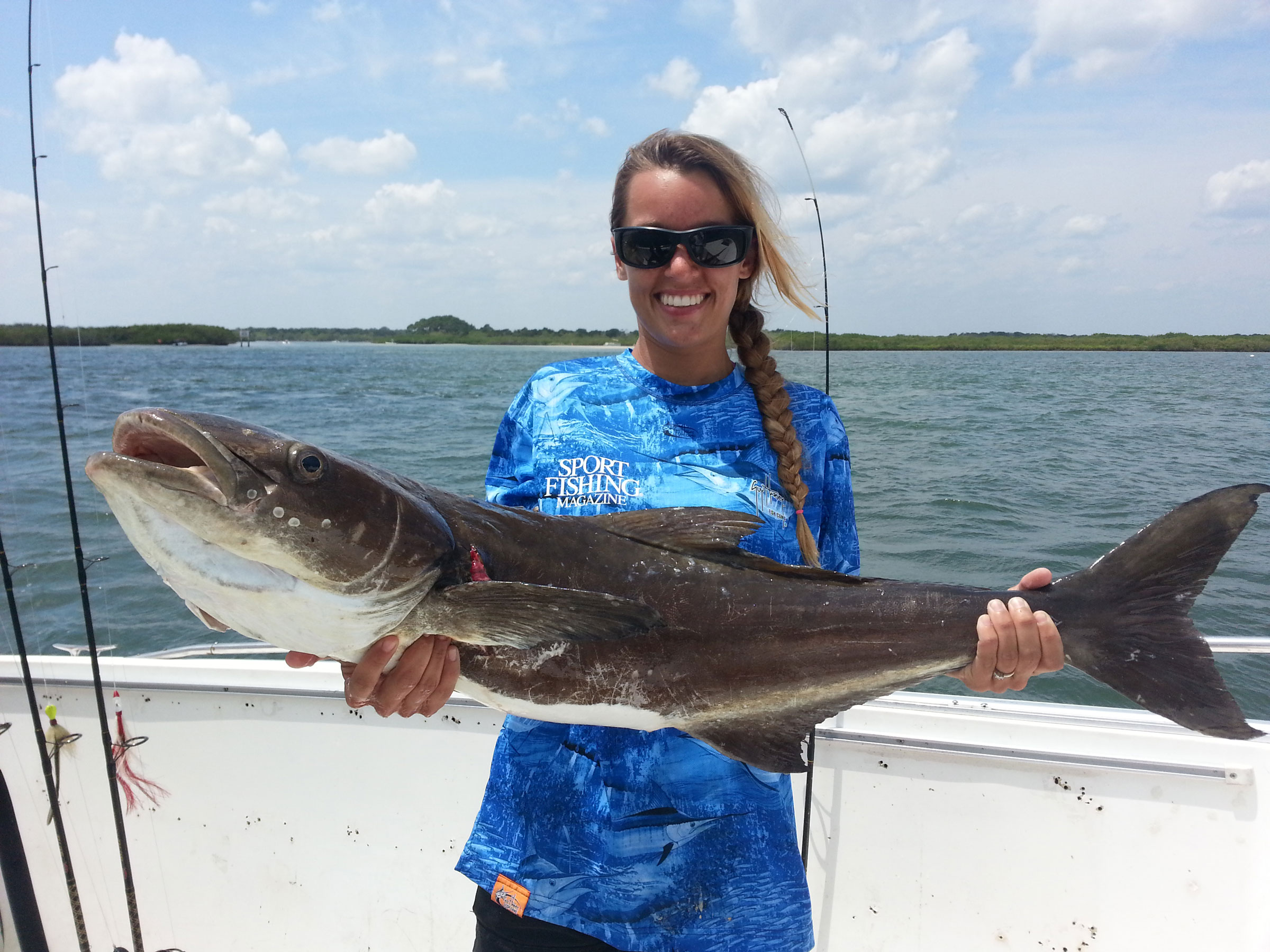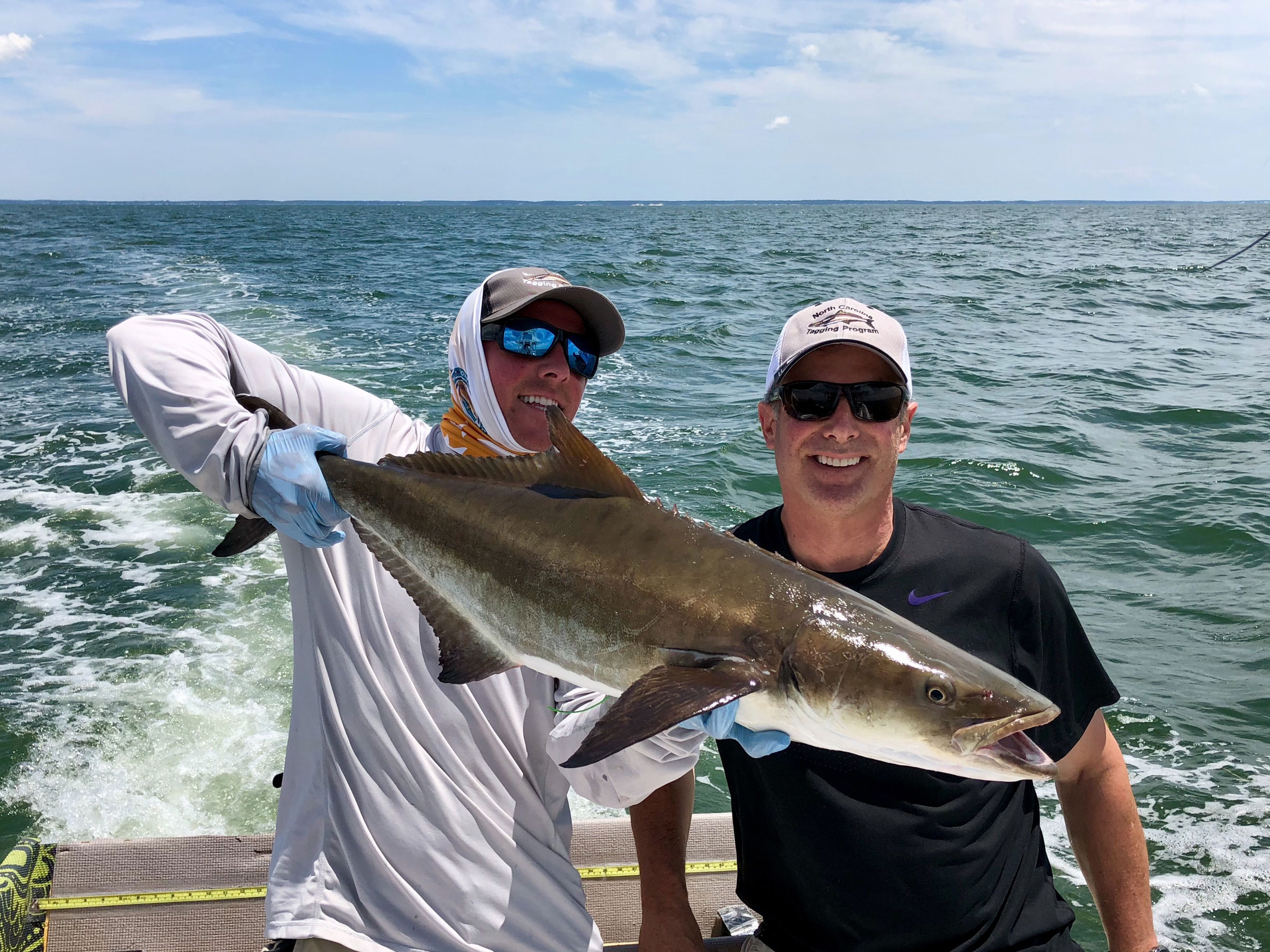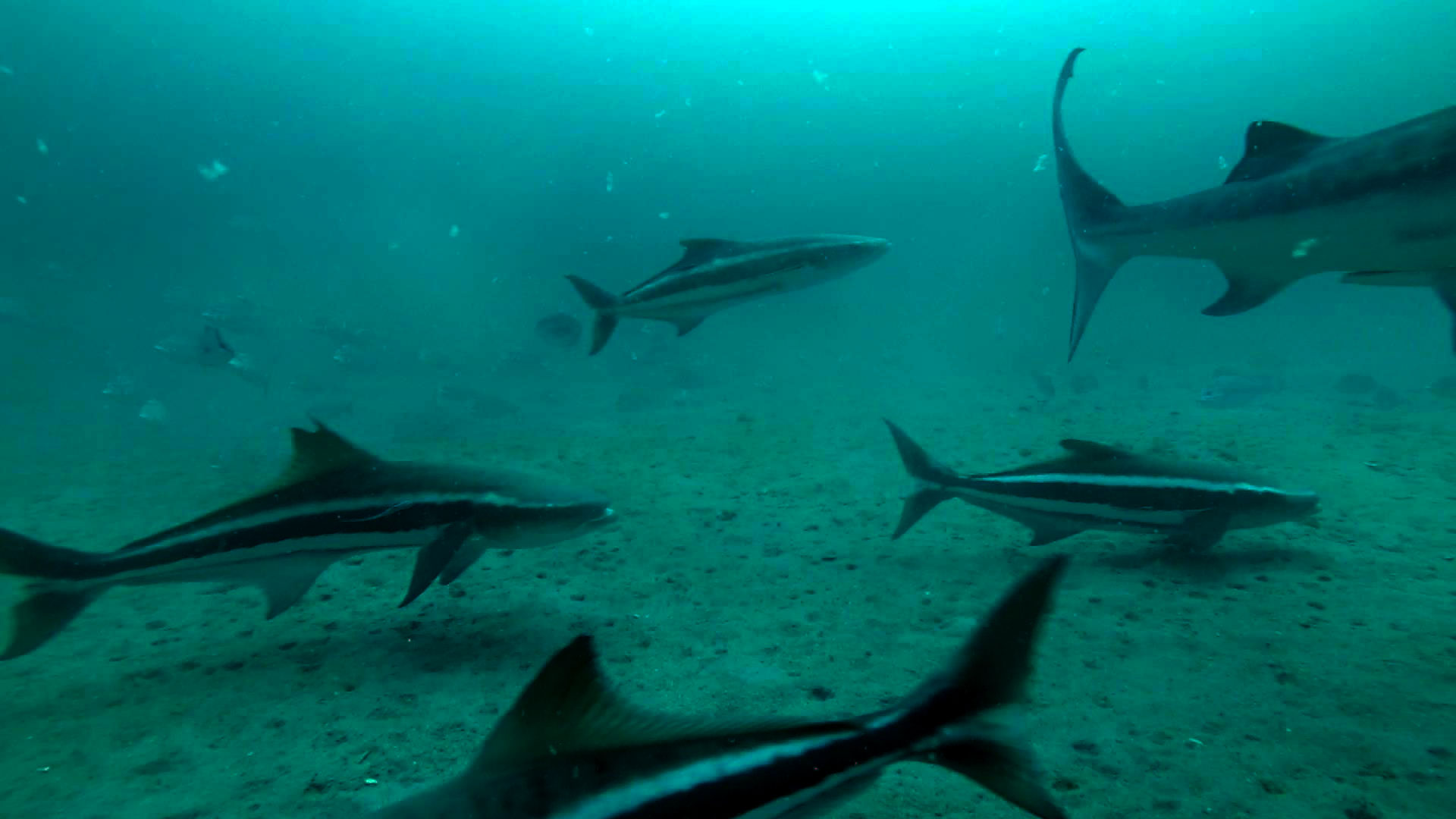Cobia

-
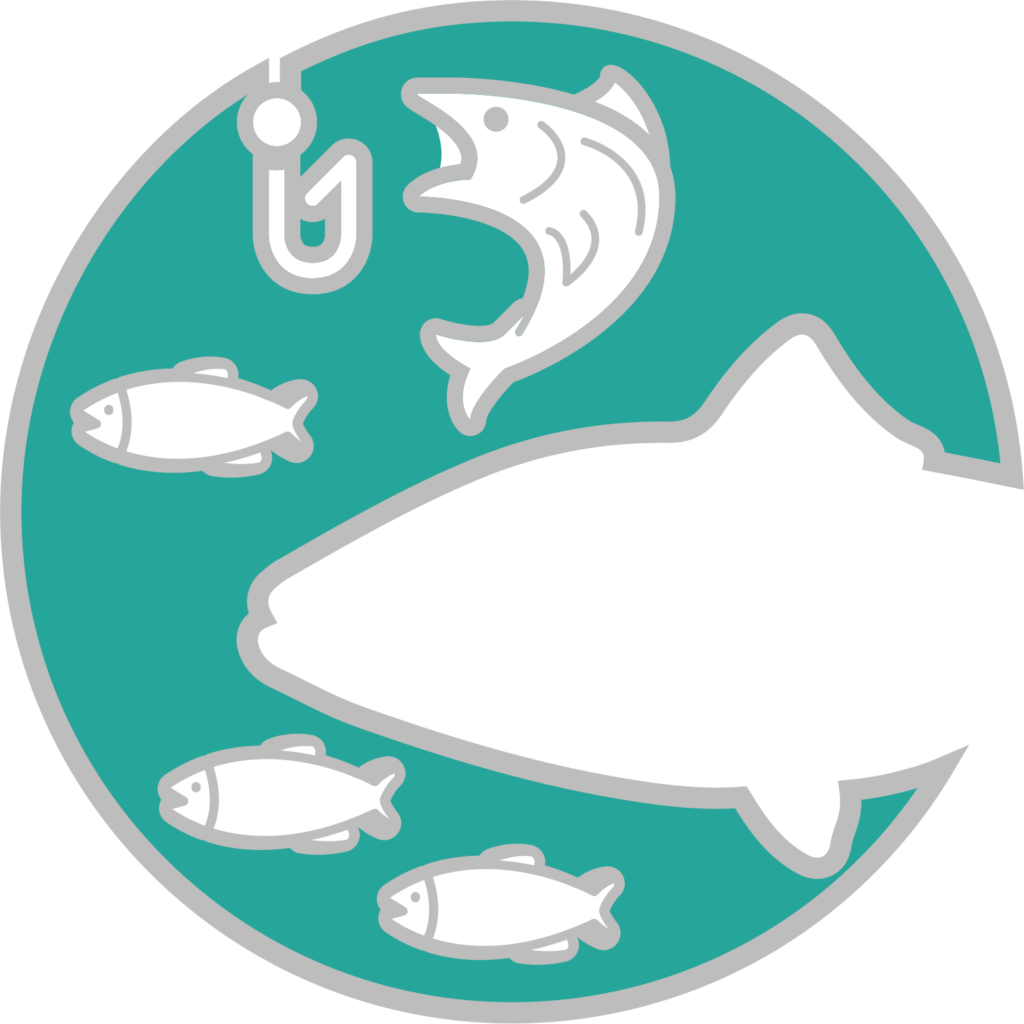
Population Abundance
Not overfished
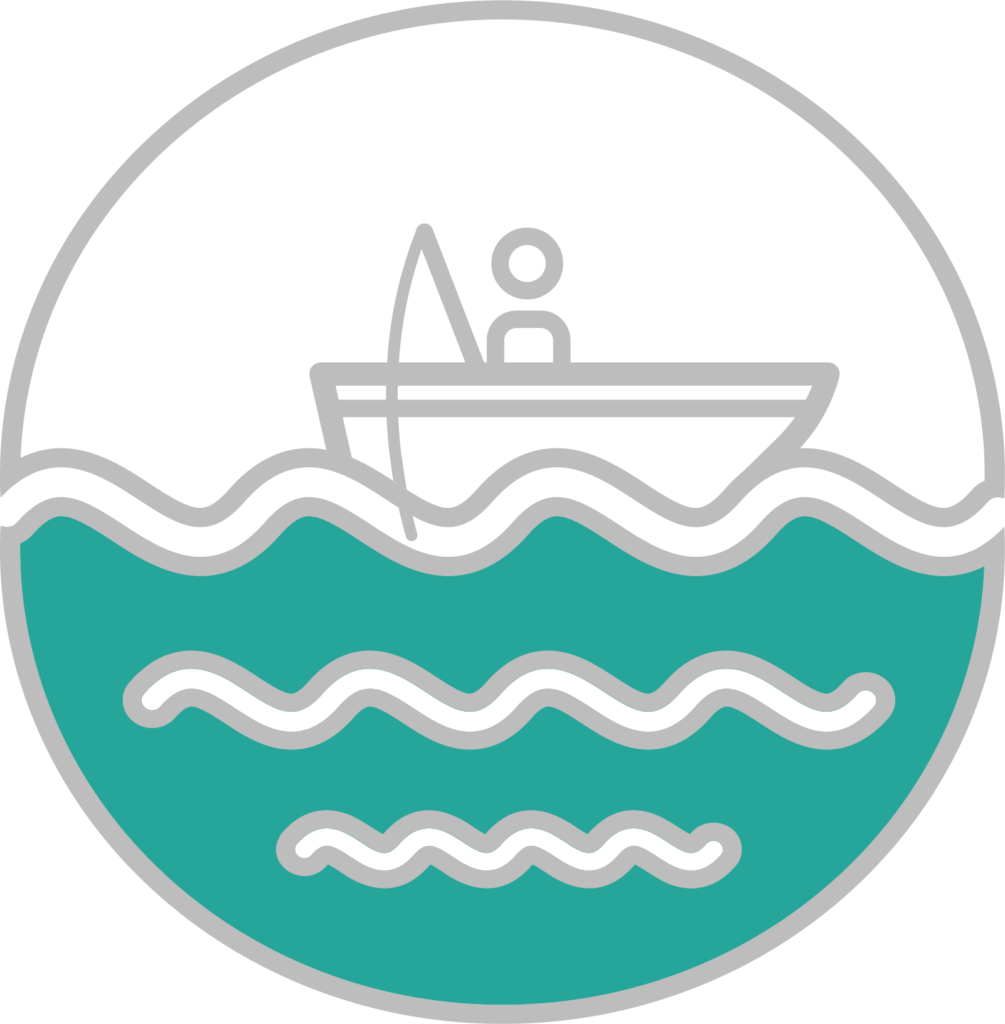
Fishing Mortality
Overfishing not occurring
Current Status
Stock status based on 2020 benchmark stock assessment. Pattern of rapid biomass increases in strong recruitment years followed by years of decline. Addendum II (2024) modifies recreational allocation framework, allows Board to quickly update allocations if underlying data are revised, expands range of data used in harvest evaluations, and allows Board to set management measures for longer periods.
Meeting Calendar
Next Meeting
Contacts
- Emilie Franke, FMP Coordinator (EFranke@asmfc.org)
- Management Board, Spud Woodward, Chair
- Technical Committee, Angela Giuliano, Chair
- South Atlantic Species Advisory Panel, Craig Freeman, Chair
Species Information
Cobia are highly prized game fish found along the Atlantic coast from Nova Scotia to Argentina, renowned for their strength and agility, making them a favorite among recreational anglers. Managed under the Interstate Fishery Management Plan, cobia fisheries balance substantial recreational harvests with sustainable commercial quotas to ensure healthy populations. Recent stock assessments confirm that cobia are not overfished or experiencing overfishing, with ongoing adaptive management measures in place to support the species’ resilience and long-term viability for both fisheries and coastal communities.
Management
Cooperative management of Atlantic cobia with the South Atlantic and Gulf of Mexico Fishery Management Councils began in 2017 when the Commission approved the Interstate FMP for Atlantic Migratory Group Cobia. In 2019, the Commission approved Amendment 1 to the FMP, which transitioned the FMP from complementary management with the Councils to sole management by the Commission’s member states. The Amendment established management measures for the transition, including processes for the Commission to set harvest quotas and sector allocations, defining stock status criteria, and recommending management measures to be implemented by NOAA Fisheries in federal waters. Amendment 1 also transitioned responsibilities of monitoring and closing (if necessary) commercial harvest to the Commission. The Amendment established a de minimis status for the commercial sector that exempts states with small commercial harvests from in-season monitoring requirements. States were required to implement measures of Amendment 1 by July 1, 2020.
In 2019, in response to concerns regarding recreational and commercial sector quota allocations, the Board initiated Addendum I. Approved in October 2020, the Addendum modifies the allocation of the resource between the commercial and recreational sectors, updates the methodology to calculate the commercial trigger for in-season closures, and adjusts commercial and recreational de minimis measures. This resulted in some state recreational measure changes in 2021. The current management program manages the recreational fishery with a 1 fish bag limit and a minimum size limit of 36” fork length or 40” total length. Season restrictions and vessel limits are determined by individual states, but may not exceed 6 fish per vessel.
In 2023, in response to increased cobia harvest in some Mid-Atlantic states, as well as concerns about high uncertainty associated with cobia recreational harvest estimates, the Board initiated Addendum II. Approved in 2024, Addendum II modifies the recreational allocation framework, allows the Board to update allocations quickly if the underlying data are revised, expands the range of data used in harvest evaluations, and allows the Board to set management measures for a longer period of time. Notably, Addendum II changes both the geographic scope of the recreational allocation framework and the timeframe of data used as the basis for allocations. The Addendum changes the recreational allocation framework from a state-by-state to a regional framework, with a northern region of Rhode Island through Virginia and a southern region of North Carolina through Georgia. The new regional allocation framework is intended to reduce uncertainty by using harvest estimates based on a larger sample size combining multiple states in a region, instead of individual state-level harvest estimates. Each region is allocated part of the recreational quota based on each region’s percentage of the coastwide harvest in number of fish over the last ten years, combining 50% of 2014-2023 data and 50% of 2018-2023 data. This results in 68.7% of the recreational quota available to the northern region and 31.3% of the quota available to the southern region. Using the more recent data, as compared to previously using 2006-2015 data, accounts for changes in harvest and potential range expansion of the species in recent years. This new recreational allocation framework will be used to set recreational measures for 2025 and beyond.
The total harvest quota for both sectors for the upcoming 2024-2026 fishing seasons is 80,112 fish, which is the same harvest quota that has been in place since 2020. Per the 96% allocation to the recreational sector, this results in a coastwide recreational harvest target of 76,908 fish. Per the Addendum II regional allocation framework, upcoming 2025 recreational measures will be based on evaluating each region’s harvest from 2021-2023 against the following regional soft targets: 52,825 fish for the northern region and 24,083 fish for the southern region.
Per the Addendum I allocation of 4% for the commercial sector, the commercial fishery has a coastwide commercial quota of 73,116 pounds annually for the 2021-2023 fishing seasons and for the upcoming 2024 season. The current management measures for the commercial fishery include a 33” FL (or 37” total length) minimum size limit and 2 fish limit per person, with a 6 fish maximum vessel limit. The commercial Atlantic cobia fishery will close once the commercial quota is projected to be reached.
Stock Status
Two cobia stocks are found off the US Atlantic coast: Atlantic cobia and Gulf Migratory Group (Gulf cobia). Gulf cobia occur throughout the Gulf and extend to Florida’s east coast, while Atlantic cobia occur from Georgia north. These stock boundaries were confirmed in a 2018 Stock Identification Workshop, but stock structure continues to be investigated through ongoing tagging and genetic studies to further identify and describe potential subcomponents of these populations.
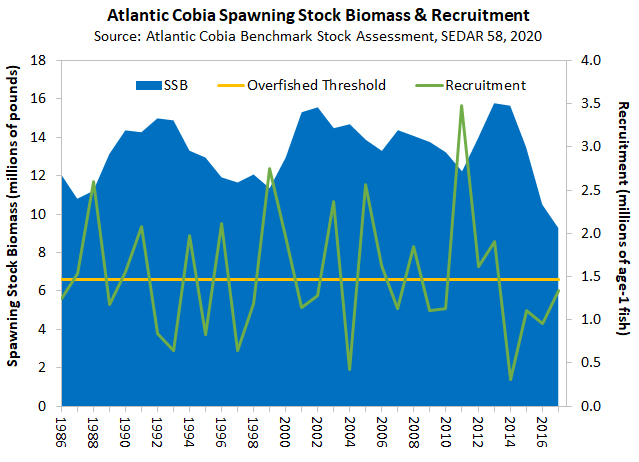
The 2020 Atlantic Cobia Benchmark Stock Assessment (SEDAR 58) found the stock is not overfished nor experiencing overfishing. Stock status was determined by comparing spawning stock biomass (SSB) and fishing mortality rate (F) to reference point values based on F40%, or the fishing mortality rate that results in 40% of the stock’s maximum reproductive potential in the absence of fishing.
Atlantic cobia biomass has shown a pattern of rapid increase in strong recruitment years followed by years of decline. These strong year classes have maintained the stock above the overfished threshold through subsequent periods of biomass decline since the 1980s. Data from the assessment identified several of these notably strong year classes, the most recent of which occurred in 2010.
The next stock assessment for Atlantic cobia is a benchmark assessment (SEDAR 95) scheduled for completion in late 2025.
Commercial & Recreational Fisheries
Enthusiastically pursued by recreational anglers, Atlantic cobia support an important recreational fishery throughout the South Atlantic and into the Mid-Atlantic region. Primary methods include bottom fishing with natural bait as well as sight-casting, which has gained popularity in recent years. The annual recreational harvest of Atlantic cobia, found along the US Atlantic coast from Georgia northward, has varied widely with little trend since 2003, ranging from 28,624 fish to 113,939 fish. However, the recreational fishery has grown noticeably in recent years, with average recreational harvest of 79,500 fish (2.3 million pounds) per year over the last 10 years (2014-2023). The 2023 recreational harvest was 98,311 fish (2.8 million pounds), with the majority harvested by Virginia and North Carolina.
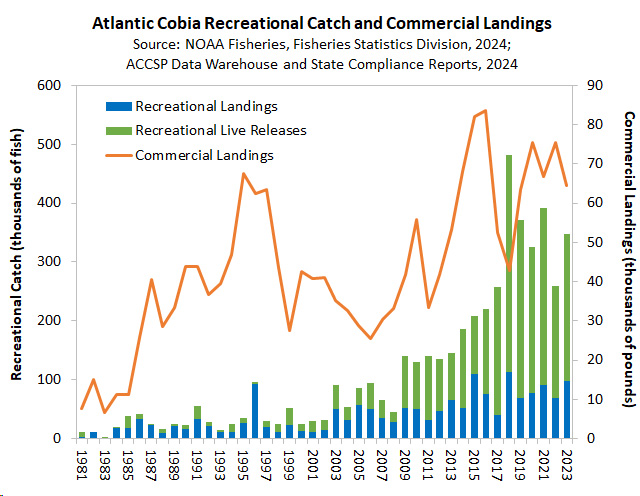
The commercial fishery is on a much smaller scale, with an average harvest of about 67,470 pounds per year over the last ten years. Coastwide cobia commercial landings in 2023 were estimated at about 64,547 pounds, with the majority harvested by Virginia and North Carolina. Primarily a bycatch fishery in some areas, it has been associated with the snapper/grouper hook and line fishery and troll fisheries for many South Atlantic species, although more directed fisheries have recently developed in some areas. Commercial restrictions are consistent throughout the range, with a 2 fish per person possession limit, 6 fish vessel limit, and a 33” fork length minimum size limit. The two greatest commercial harvests in the time series, which extends back to 1950, occurred in 2015 and 2016 at over 80,000 pounds each year.
Life History
Cobia (Rachycentron canadum) are distributed worldwide in tropical and warm-temperature waters. They occur along the Atlantic coast from Nova Scotia to Argentina, and are most abundant in US waters from Chesapeake Bay south through the Gulf. Two stocks are recognized in US waters, one along the Atlantic coast from Georgia north (Atlantic cobia) and the other along the east coast of Florida through the Gulf. This stock definition was concluded through the Southeast Data, Assessment, and Review (SEDAR) 58 Stock Identification Process. Stock structure continues to be investigated through ongoing tagging studies to further identify and describe potential subcomponents of these populations.
Cobia typically reach sexual maturity by 3 years (generally 2.5 feet long, fork length), with males maturing earlier than females. Females grow to be larger than males, and may reach 6 feet and weigh up to 100 pounds. On the US Atlantic coast, cobia move into nearshore waters when water temperatures reach 20-25°C (68-77°F). While aggregated inshore, they spawn over a period of 4-6 weeks. Spawning is localized, with at least 2 genetically distinct spawning aggregations occurring within the Atlantic stock, one in Virginia and the other in South Carolina. The timing of local spawning progresses up the coast as temperatures warm, with peak spawning in May for South Carolina, June for North Carolina, and July for Virginia. Cobia are batch spawners, meaning a female may spawn several times (about every 4 to 6 days) during the spawning season.
Cobia make seasonal migrations, wintering in the south or offshore and moving north and inshore during the summer months. They are drawn to structure to feed and find shelter from predation. Juveniles and adults are often found around live bottom, wrecks, and buoys, as well as flotsam and seaweed mats. Their diet consists primarily of fish and crustaceans.
News & Resources
Explore recent news, management updates, and scientific reports to gain a deeper understanding of ongoing conservation efforts and sustainability strategies.
-
The Atlantic States Marine Fisheries Commission’s Winter Meeting will be February 4 – 5, 2025 at The Westin Crystal City.
-
A summary of all the board meetings, press releases and motions from the 2025 Annual Meeting.
-
-
-
-
-
-
As of November 18, 2024, the total reported commercial landings of Atlantic cobia in 2024 from non-de minimis states (New York, PRFC, Virginia, North Carolina, South Carolina) meets the commercial trigger level.
-
The Cobia Technical Committee (TC) met via webinar on September 13 and September 25, 2024 to discuss methods for calculating recreational management measures for the Northern Region to meet its harvest target. This memorandum outlines those methods and resulting management options for the Northern Region for implementation in 2025.
-
The Cobia Technical Committee (TC) met via webinar on September 13 and September 25, 2024 to discuss the Addendum II confidence interval approach as tasked by the Board in August 2024. The Board asked for TC discussion on the potential application of the confidence interval approach to the regional allocation framework, and to consider other…
-
82nd Annual Meeting, October 21 – 24, 2024
-
-
-
-
The final approved addendum modifies the recreational allocation framework, allows the Board to update allocations quickly if the underlying data are revised, expands the range of data used in harvest evaluations (up to five years of harvest data under the same management measures), and allows the Board to set management measures for a longer period…
Get Hooked on ASMFC News
Dive into the latest updates and catch all the important news by joining our newsletter mailing list. Stay in the loop with meeting agendas, fisheries management news, and more.

